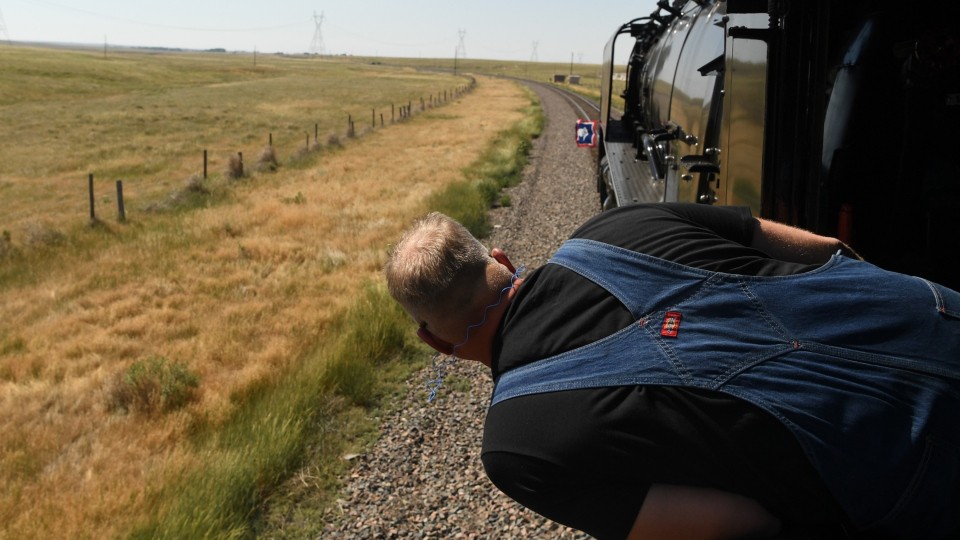Railroad Conductors & Yardmasters
Conductor, Freight Conductor, Railroad Conductor, Yardmaster
 Select a military branch to see samples.
No similar titles were found.
Select a military branch to see samples.
No similar titles were found.
Cavalry Scout; Railway Specialist (USAR only); Wheeled Vehicle Mechanic
No similar titles were found.
No similar titles were found.
No similar titles were found.
No similar titles were found.
What they do:
Coordinate activities of switch-engine crew within railroad yard, industrial plant, or similar location. Conductors coordinate activities of train crew on passenger or freight trains. Yardmasters review train schedules and switching orders and coordinate activities of workers engaged in railroad traffic operations, such as the makeup or breakup of trains and yard switching.
On the job, you would:
- Signal engineers to begin train runs, stop trains, or change speed, using telecommunications equipment or hand signals.
- Confer with engineers regarding train routes, timetables, and cargoes, and to discuss alternative routes when there are rail defects or obstructions.
- Receive information regarding train or rail problems from dispatchers or from electronic monitoring devices.
Knowledge
Safety and Government
- public safety and security
- law and government
Transportation
- movement of people or goods by air, rail, sea, or road
Arts and Humanities
- English language
Education and Training
- teaching and course design
Skills
Basic Skills
- keeping track of how well people and/or groups are doing in order to make improvements
- talking to others
Problem Solving
- noticing a problem and figuring out the best way to solve it
People and Technology Systems
- thinking about the pros and cons of different options and picking the best one
- figuring out how a system should work and how changes in the future will affect it
Abilities
Verbal
- communicate by speaking
- listen and understand what people say
Ideas and Logic
- notice when problems happen
- order or arrange things
Attention
- pay attention to something without being distracted
- do two or more things at the same time
Hearing and Speech
- recognize spoken words
Personality
People interested in this work like activities that include practical, hands-on problems and solutions.
They do well at jobs that need:
- Leadership Orientation
- Stress Tolerance
- Cautiousness
- Integrity
- Attention to Detail
- Dependability
Technology
You might use software like this on the job:
Spreadsheet software
- Microsoft Excel
Presentation software
- Microsoft PowerPoint
Industrial control software
- RailComm DocYard
- SAIC government services and IT support software
Education
Education: (rated 2 of 5)
high school diploma/GED
usually needed
usually needed
Job Outlook
Below Average
New job opportunities are less likely in the future.
Explore More
- Dispatchers
- Locomotive Engineers
- Rail Yard Engineers, Dinkey Operators, & Hostlers
- Railroad Brake, Signal, & Switch Operators & Locomotive Firers
- Subway & Streetcar Operators
You might like a career in one of these industries:
See more details at O*NET OnLine about Railroad Conductors & Yardmasters.





